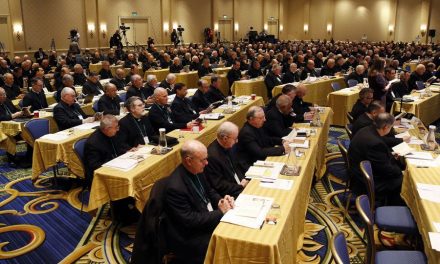Every other Monday, New Wine New Wineskins, a fellowship of early-career moral theologians, shares posts from members. This week, NWNW board member Megan Heeder shares from her presentation at the 2023 NWNW annual conference, held this past July at the University of Notre Dame. Check back every other Monday for more content from NWNW!
One of the most powerful forces in the proliferation of eating disorders, disordered eating, and body dissatisfaction is the current onslaught of feminine thin-ideal images in media. Advertisements, posts, TikToks, and most other presentations of women on social media depict the thin-ideal (presentations of women that are unrealistic and unhealthy for most body types), often through image-editing, favorable angle manipulation, or other means. Girls, teens, and women who are inundated with these images internalize them. A recent 2019 study on the thin-ideal’s effect identifies its internalization as one of the few risk factors that researchers can identify as providing sufficient empirical evidence to support the thesis that it functions as a causal risk factor for disordered eating. The data also indicates that thin-ideal internalization frequently continues into the recovery process and can predict a heightened relapse risk. The thin-ideal is both a facsimile of female beauty and a theological problem.
Therefore, addressing the feminine thin-ideal’s influence is central to developing a robust moral theological response to eating disorders, body dissatisfaction, and the recovery process as well as the well-being of women and men more broadly. (I focus on women here because standards for mens’ bodies are different, oriented toward physical standards other than thinness). One facet of interrogating the thin-ideal is critiquing the commonly-held belief that “thinner is always better” in light of theological aesthetics, particularly in regards to the thin-ideal’s relationship to beauty. Because the thin-ideal defines current beauty standards, moral theology must address society’s unhealthy, harmful understanding of beauty as part of its response to the thin-ideal’s relationship to eating disorders and body dissatisfaction.
Hans Urs von Balthasar’s theological aesthetics is central to a theological re-orientation of cultural beauty standards away from the thin-ideal toward a vision of beauty which flows from God’s own Being. Balthasar indicates that to be truly beautiful, a thing must be connected to God. Not everything that is attractive is worthy of love; that which is both helps orient us toward and draw us closer to God. For Balthasar, beauty is comprised of a unity of two things: form and splendor. Form is the external attractiveness of a thing, the ratios and other visual aspects which attract the eye’s appreciation. Splendor is the internal radiance which draws the viewer in, communicating something about the thing’s essence and its connection to Being. Both form and splendor must be present for something to be beautiful.
I believe that Balthasar’s theological aesthetics is fundamental to developing a theological moral response to the challenges of eating disorders and body dissatisfaction. Thinking about beauty in terms of not only the external form (which one could argue might be able to be reduced to a too-thin female body whose overall appearance is attractive, if not healthy as an ideal for most women), but the splendor (the radiance which comes from being a human made in God’s image and the simultaneous embrace of that reality which results in the pursuit of a life of holiness, a pursuit which will continue until heaven) gives metaphysical language to the all-encompassing nature of beauty through a theological lens. Who we are as people, in particular our beauty as children of God, is not because of the size or shape of our bodies or how well they align to the ever-shifting cultural standards of beauty. Our beauty blossoms forth from our connection with God; God’s own existence as Beauty, Goodness, and Truth; and our pursuit of closeness with the source of all these goods (in part, through growth in virtue). Balthasar’s theological aesthetics gives us tools to understand and speak about this truth theologically, a gift in helping us understand who and Whose we are in a culture which often wishes to evaluate us based on our physical appearance. I hope this insight can be helpful both in moral theological thought about this topic, and for those who grapple with the challenges of eating disorder behaviors and/or body dissatisfaction.
Megan Heeder is a doctoral candidate at Marquette University, currently exploring the intersection between theological aesthetics and virtue ethics for developing a Catholic moral response to eating disorders and body dissatisfaction.




